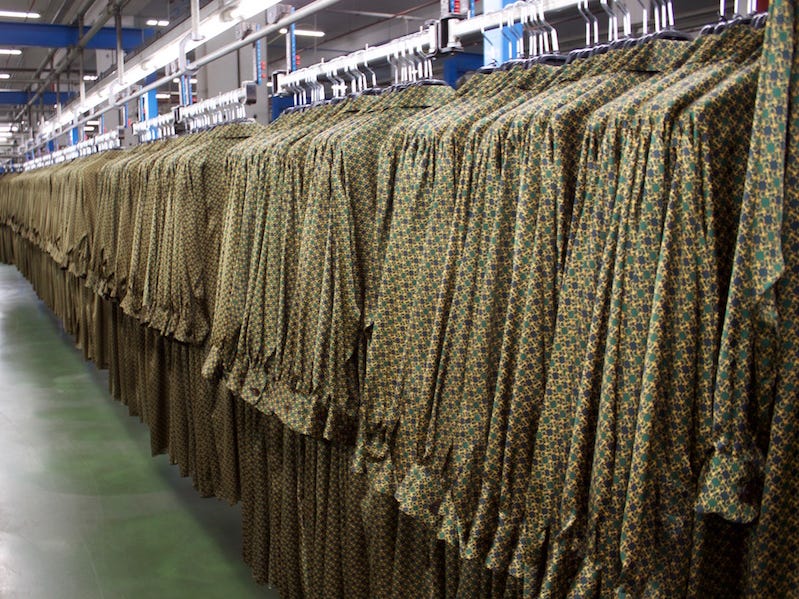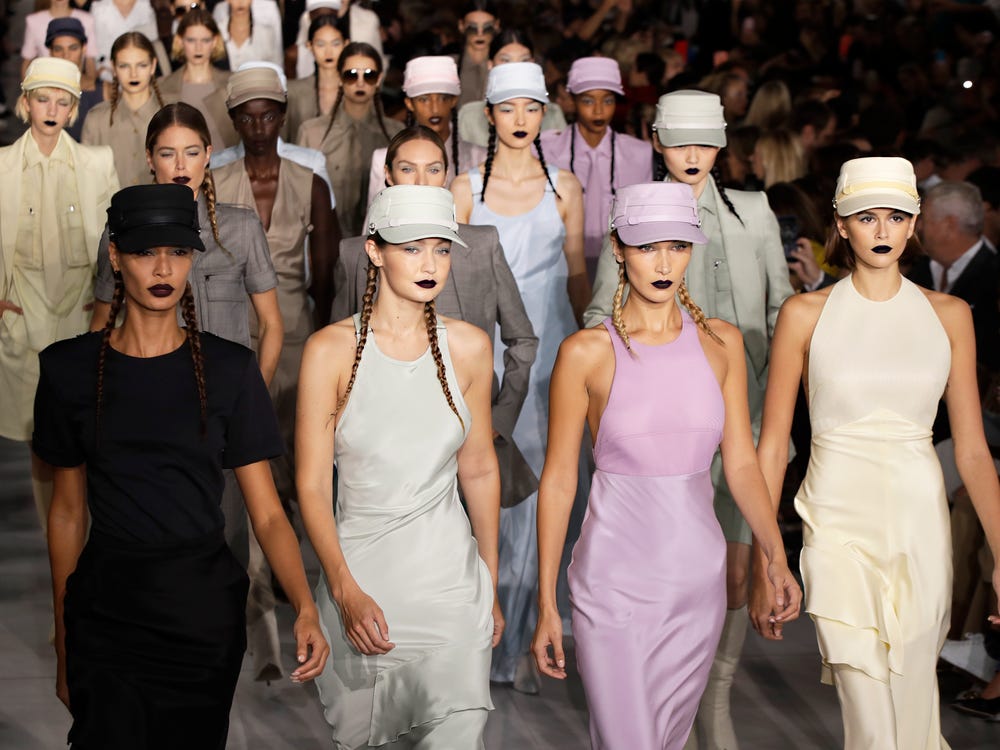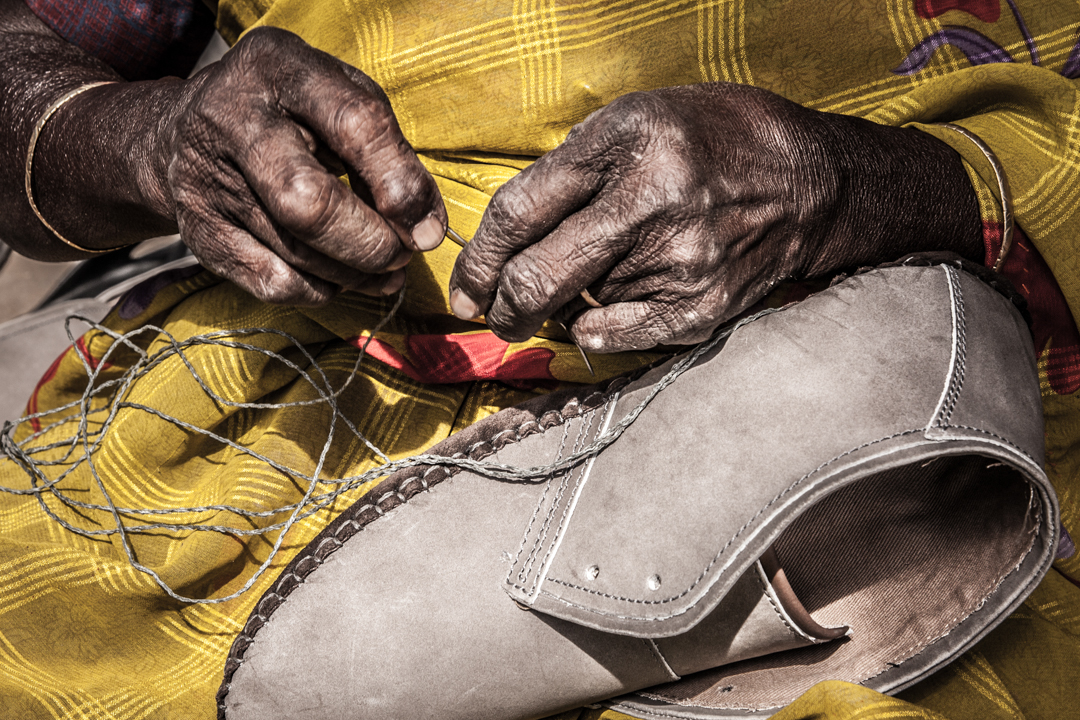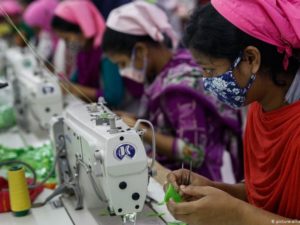This is Part 1 of a 4-Part Series, looking at the underlying structure of the fashion industry, its unavoidable externalities, and the role of countries, NGOs, activists, and consumers.
PART 1
In 2019 the UK House of Commons Environmental Audit Committee introduced a White Paper titled “Fixing Fashion: Clothing Consumption and Sustainability” in response to the undeniable environmental impact of the fashion industry and the extreme lapse in accountability granted it for so long. While countries and large brands have historically bickered over who is responsible for ensuring labour reforms, civil society – such as unions and labour rights activists – have been largely responsible for pressuring them to shape up. Recently, highly-regarded non-governmental organisations (NGOs) such as Clean Clothes Campaign and Fashion Revolution have successfully re-centred the push for labour rights within fashion circles, while shifting their gaze onto the increased necessity of environmental reforms aimed directly at consumers through social media campaigns. They produce yearly accountability reports grading big brands on safety compliance, transparency, wages, and environmental impacts, intending to both shame companies and inform consumers.
These agencies emerged as global authorities through their refusal to allow the companies complicit in the Rana Plaza catastrophe to go unaccountable. Rana Plaza’s collapse in Bangladesh, where 1,138 garment workers were crushed and 2,500 injured in an unstable factory was a pivot point for the industry – Fashion Revolution’s slogan, “no one should die for fashion” and hashtag Who Made My Clothes? have been particularly potent in keeping labour rights front-and-centre. Yet atrocities continue. Fast-fashion production is a transnational process with extreme labour and environmental impacts that fall largely along racialized and gendered lines. However, it is important to understand that these impacts are not unforeseen externalities but are designed into a production system that functions primarily by finding and producing “cheap” anywhere it can. I will post a piece at some point about the gendered and racial hierarchies foundational to capitalism’s success: without use of these inequalities, the fast-fashion industry as we know it could not succeed.
The Atrocities
The fashion industry’s dismal record of safety standards have included multiple factory fires in Pakistan, India, and Bangladesh; a recent one being seven in an Indian factory which listed some of its denim clients as Zara, Ralph Lauren, Target, and Primark. The exit was only accessible by a single ladder. This record is often well-hidden from consumers through complex and opaque supply chains, slick marketing, and the cultural normalization of constant consumption and disposable clothing. A previous significant exposé of fashion’s dirty secret occurred in the 1990s when Nike’s use of sweatshop labour surfaced shortly after it moved its production abroad to Indonesia. Consumer awareness increased, and civil society groups boycotted Nike and other brands’ use of sweatshops. By 2002, Nike had promised to audit its factories under such pressure. While this seemingly bodes well for consumer and societal pressure, new allegations of poor labour conditions in Vietnam resurfaced in 2017, meaning groups like Worker Rights Consortium, once again, had to force Nike into transparency agreements as they same problems had simply resurfaced elsewhere (Nova, 2017).
If one keeps in mind that brands’ ability to secure cheap labour and resources is absolutely essential to their survival and ability to pocket profits that exceed their previous yearly revenue, these persistent problems make sense. Although the 1990s was a period of increasing global awareness of human rights issues and increasing international frameworks to support them, big brands were largely able to tweak visible flaws and simply reroute and intensify production to maintain capital flows. Growth since the 1990s in the large category of “fashion” (fabric, shoes, accessories, bridal, adult, and children’s wear) is now worth 2.4 trillion dollars, 2% of the world’s GDP. It’s the 7th largest economy “if ranked alongside individual countries’ GDP”, and directly employs 75 million people along its complex value chains. Yet, it is seemingly unable to eradicate sweatshops, develop fair wages, protect resources, or eliminate factory deaths. Currently, workers’ wages within the top garment-exporting economies (China, India, Bangladesh, and Vietnam) average at $242USD a month. Bangladesh’s garment exports alone were worth $38.73bn in 2017, while its labourers finally received a long-fought-for $93USD a month last year, which was half of an actual liveable minimum wage.
None of this came without brutal state retaliation and arrests. The garment industry, functioning largely in the Global South, often pays well below national wage averages. And, with 34 of the 40 million global garment workers being women, the endemic precarities of poverty, physical safety, and sexual assault hit women of colour the worst: 90% of those harmed in Raza Plaza were women. Why? Because continual surplus of profits requires a continual search for cheaper and cheaper production practices. If, for example, an international brand sells to fashionistas in most cities in the world in 2020, to beat profits in 2021, it must either a) find new consumers to sell to/convince new people to buy its wares, or b) cut production costs. As we live in a highly-saturated global fashion reality, for large brands to find new consumers is increasingly difficult. It’s easier to slash production costs, then mass-produce to dominate consumers’ attention. This model is the root of the problem.

The Environment
Environmentally, things are worse. 97% of garments are not made in North America or Europe, but are made abroad. Aside from the carbon footprint of these transnational supply chains, this production often occurs within countries with poor environmental regulations as production costs are cheaper here for brands. Leather-tanning’s “known or suspected” carcinogens such as “hexavalent chromium salts, arsenic, benzene, formaldehyde, butyl acetate, toluene and acetone” are linked to lung, pancreatic, skin, kidney, pharynx, sinus, bladder, and other cancers and respiratory issues, with such findings known since the 1980s. According to the World Bank, while economies of scale and poverty-wages provide consumers with impossibly cheap clothing, this scale of production swallows 93 billion cubic metres of water yearly (3,781 litres, from seed to finish, to produce a pair of jeans) and is responsible for 20% of the world’s dye-and-chemical-laden wastewater. 70 billion barrels of oil are poured into the creation of polyester each year, with synthetic fabric fibres being the largest contributor to oceanic and freshwater micro-plastics, their 35% contribution beating out car tires by 7%. Of total produced fibre for clothing, 87% is incinerated or buried in landfills, as consumers tire of their purchases – goaded on by endless marketing campaigns. Despite this, the fashion industry is projected to spew increased emissions of 60% by 2030 if current trajectories are left unaltered.
Part 2 will discuss underlying issues in this system and NGO efforts to mitigate what it produces.
=====
PART 1 & 2 RESOURCES:
Amed, Imran, Achim Berg, Leonie Brantberg & Saskia Hedrich. (2016). The State of Fashion 2017. McKinsey Report. Retrieved from: https://www.mckinsey.com/industries/retail/our-insights/the-state-of-fashion
Blanchard, Tamsin. (2019, April 22). Who made my clothes? Stand up for workers’ rights with Fashion Revolution week. The Guardian. Retrieved from: https://www.theguardian.com/fashion/commentisfree/2019/apr/22/who-made-my-clothes-stand-up-for-workers-rights-with-fashion-revolution-week
Clean Clothes Campaign. (2018). Full support for Bangladeshi garment workers’ demands on minimum wage. Clean Clothes Campaign. Retrieved from:
Clean Clothes Campaign, Rana Plaza Campaign. Retrieved from: https://cleanclothes.org/campaigns/past/rana-plaza
Copenhagen Fashion Summit. (2020). CEO Agenda: Redesigning Fashion’s Business Model. Copenhagen Fashion Summit. Retrieved from: https://globalfashionagenda.com/ceo-agenda-2020/#traceability
ETextile Magazine. (). Top 10 Exporting Countries of the Textile and Apparel Industry. eTextile Magazine. Retrieved from: https://www.etextilemagazine.com/en/top-10-exporting-countries-of-textile-and-apparel-industry.html
Express News Service. (2020, Feb. 10). Seven workers die in fire at denim factory unit in Ahmedabad. The Indian Express. Retrieved from:
Fashion Revolution (2019). Fashion Transparency Index. Fashion Revolution. Retrieved from: https://www.fashionrevolution.org/
Fashion Network. (2019, Jan. 13). Bangladesh garment manufacturers raise workers’ pay amid further protests. Fashion Network. Retrieved from: https://ca.fashionnetwork.com/news/Bangladesh-garment-manufacturers-raise-workers-pay-amid-further-protests,1055535.html#rl
Fashion Takes Action. (2018, January 27). The 7 R’s for Fashion Lovers. Fashion Takes Action. Retrieved from: https://fashiontakesaction.com/the-7-rs-for-fashion-lovers/
Gander, Kashmira & Chiara Brambilla (). World Environment Day: How the Rana Plaza Disaster Changed Fashion Forever. Newsweek. Retrieved from: https://www.newsweek.com/world-environment-day-how-rana-plaza-disaster-changed-fashion-forever-957141
Locke, Richard, Fei Qin, & Alberto Brause. (2006). Does Monitoring Improve Labour Standards? Lessons from Nike. Harvard Kennedy School (Working Paper). Retrieved from: https://www.hks.harvard.edu/sites/default/files/centers/mrcbg/programs/cri/files/workingpaper_24_locke.pdf
Lu, Dr. Shung. (2017).Wage Level for Garment Workers in the World updated in 2017, Fash455. Retrieved from: https://shenglufashion.com/2018/03/04/wage-level-for-garment-workers-in-the-world-updated-in-2017/
Kent, Sarah. (2019, Dec. 11). Deadly Factory Fire ‘Symptom’ of Fashion’s Safety Failings. Business of Fashion. Retrieved from: https://www.businessoffashion.com/articles/news-analysis/deadly-factory-fire-symptom-of-fashions-safety-failings
Kitroeff, Natalie. (2019, Dec. 16). Fashion Nova’s Secret: Underpaid Workers in Los Angeles Factories. The New York Times. Retrieved from: https://www.nytimes.com/2019/12/16/business/fashion-nova-underpaid-workers.html
McKenna, Jack. (2020, Jan. 21). How Slow Fashion Helps Fight Climate Change. Rust & Fray. Retrieved from: https://rustandfray.com/blogs/news/how-slow-fashion-helps-fight-climate-change-1?fbclid=IwAR0AAoihHqw_VvaHTRwagDXYTG_RMKoWM24xWN_aUZ4R_DKqDwxTLL5Rrik
Monbiot, George. (2019, April 30). The problem is capitalism. George Monbiot. Retrieved from: https://www.monbiot.com/2019/04/30/the-problem-is-capitalism/
Nittle, Nadra. (2018, April 13). What the Rana Plaza Disaster Changed About Worker Safety. Racked. Retrieved from: https://www.racked.com/2018/4/13/17230770/rana-plaza-collapse-anniversary-garment-workers-safety
Nova, Scott. (2017, Aug. 30). Update Concerning Nike and Factory Access. Worker Rights Consortium. Retrieved from: https://www.workersrights.org/communications-to-affiliates/update-concerning-nike-and-factory-access/
Pilger, John. (2001). The New Rulers of the World. John Pilger. Retrieved from: http://johnpilger.com/videos/the-new-rulers-of-the-world
Rastogi, S.K., C. Kesavachandran, Farzana Mahdi & Amit Pandev. (2007). Occupational cancers in leather tanning industries: A short review. NCBI. Retrieved from: https://www.ncbi.nlm.nih.gov/pmc/articles/PMC3168109/
Stauffer, Brian. (2018). “Soon there won’t be much to hide”: transparency in the Apparel Industry. Human Rights Watch. Retrieved from: https://www.hrw.org/world-report/2018/essay/transparency-in-apparel-industry
Wood, Johnny. (2019, Dec. 13). The ocean is teeming with microplastic – a million times more than we thought, suggests new research. World Economic Forum. Retrieved from: https://www.weforum.org/agenda/2019/12/microplastics-ocean-plastic-pollution-research-salps?fbclid=IwAR288ZmMrWSCijq0ntXES1Ib7fy21LXUWtZN6UZ4ZnrInQOKStin__U1AvU
World Bank. (2019). Feature story: how much do our wardrobes cost the environment? The World Bank. Retrieved from: https://www.worldbank.org/en/news/feature/2019/09/23/costo-moda-medio-ambiente
US Bureau of Labour Statistics. (2012, June). Spotlight on Statistics: Fashion. US Bureau of Labor Statistics. Retrieved from: https://www.bls.gov/spotlight/2012/fashion/




